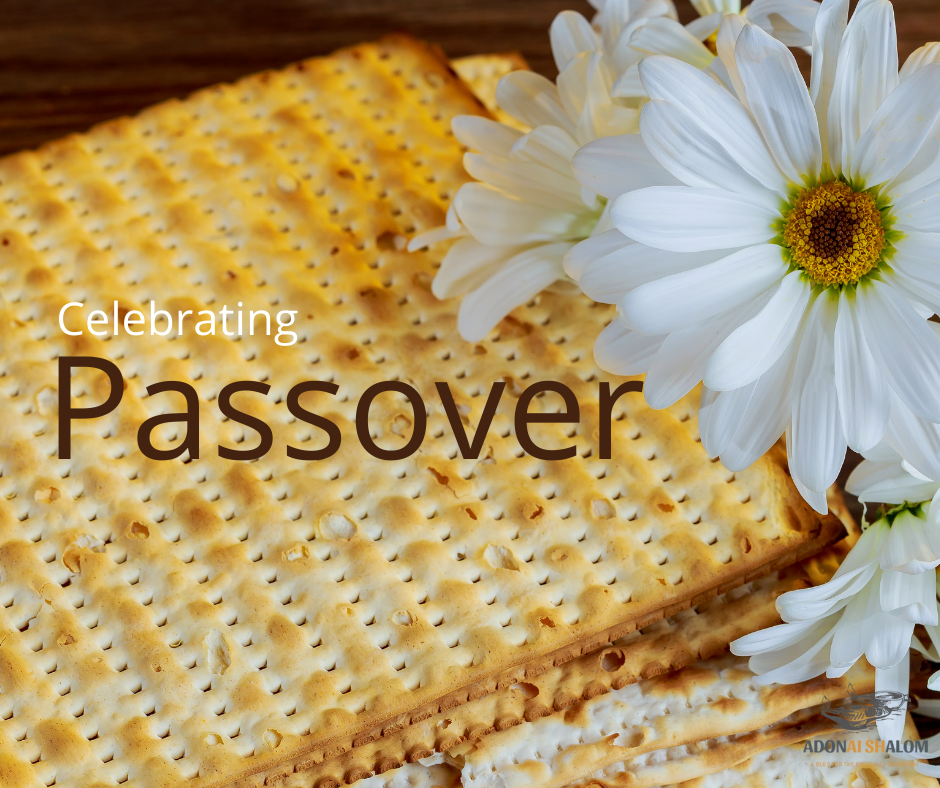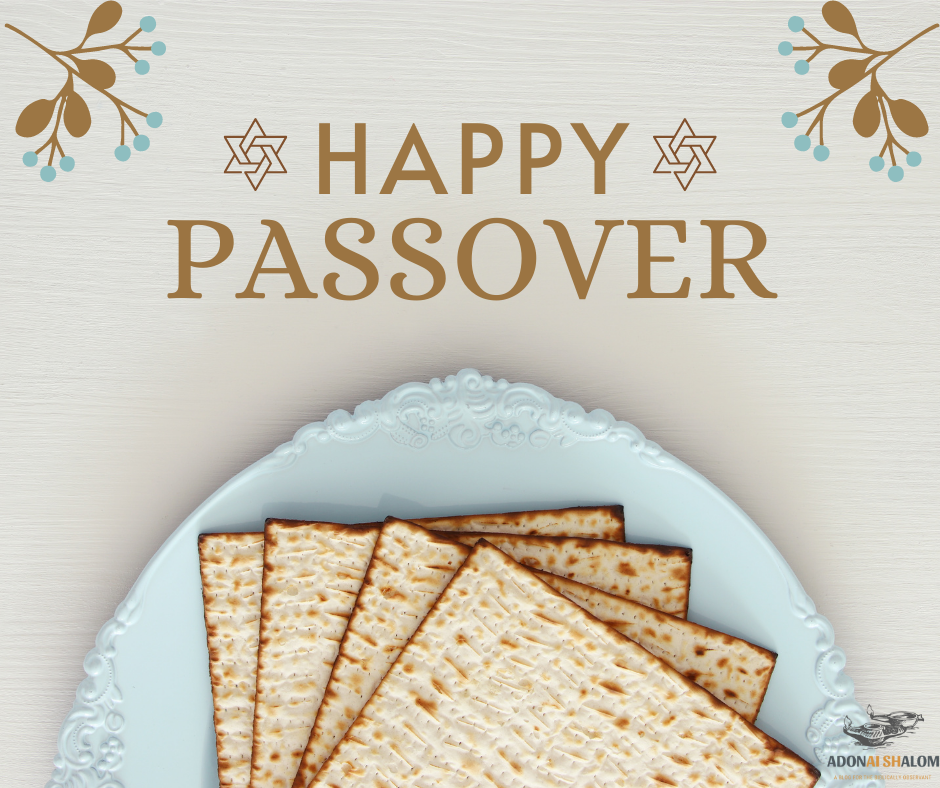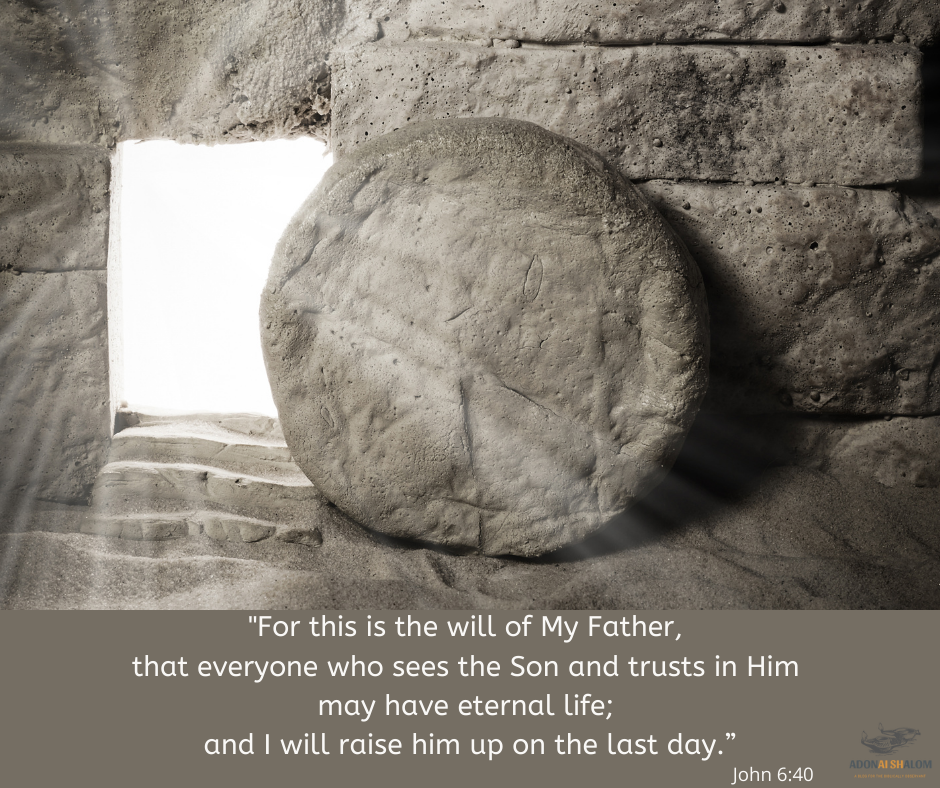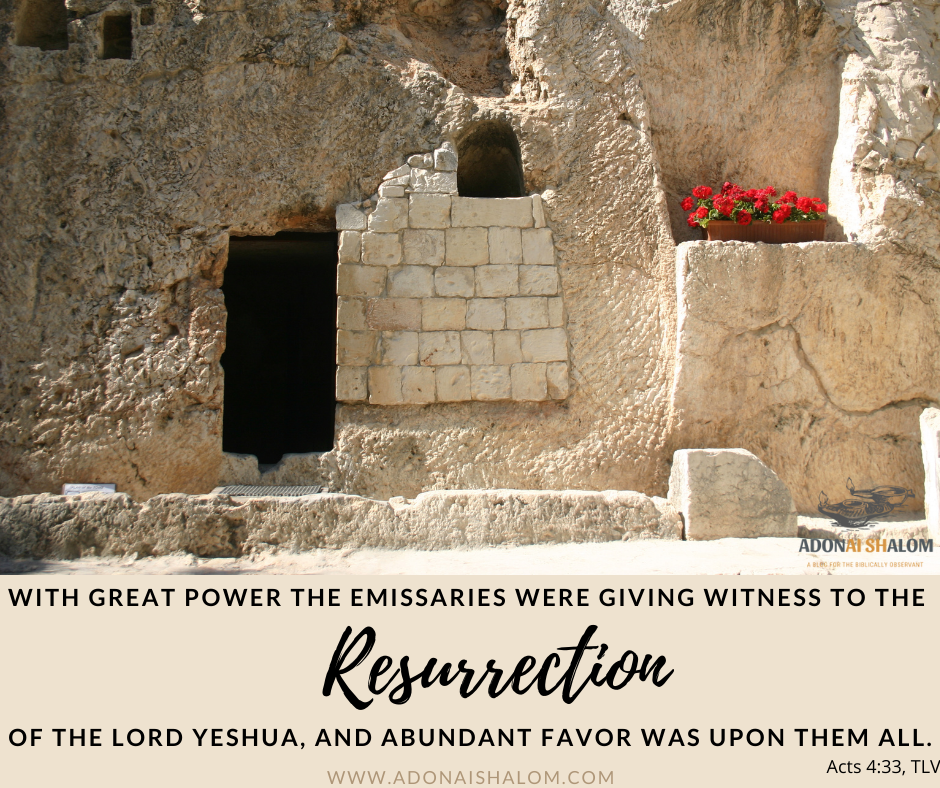What Leviticus reveals about the Day of Atonement and Passover
Parashat Acharei Mot (V’yikra/Leviticus 16-18) 5782 B”H
Atonement.
That’s not a word most of us use every day, so if you aren’t quite sure of its meaning, let me suggest that breaking it into its three syllables.
At-one-ment.
It is a theological term meaning to be made whole again, reconciled to God.
God’s Son, Yeshua (Jesus), sacrificed His life to make atonement for our sins.
I was asked an interesting question about the atonement recently and it fits perfectly into our study:
If Yeshua (Jesus) is our atonement, why did He make His sacrifice following the Passover meal rather than on the Day of Atonement (Yom Kippur)?
This is a very fair question.

Our reading from Leviticus 16-18 addresses this question since this very week we will celebrate the Passover Feast, yet this passage discusses Yom Kippur.
Yom Kippur included a necessary sin offering and burnt offering, sprinkling of blood around the Ark of the Covenant’s atonement cover, as well as a ritual involving a literal scapegoat.
When Yeshua (Jesus) was crucified, He who knew no sin became sin for us.
Yeshua (Jesus) was our sin offering.
Remember the 5 offerings listed in Leviticus and their purposes?
The purpose of the sin offering was to cleanse the penitent of their unintentional sins. Yeshua (Jesus) knows we will fail. He knows we will sin unintentionally, despite all of our best efforts to please our LORD. The atonement included forgiveness for these mistakes.
He was also our burnt offering.
The burnt offering had an aroma that pleased God. The smoke rose like incense before Him. “…walk in love, just as Messiah also loved us and gave Himself up for us as an offering and sacrifice to God for a fragrant aroma.” Ephesians 5:2 (emphasis added)
According to Leviticus 1:3, the burnt offering also had to be a male, without blemish.
We see that Yeshua fulfilled the spiritual requirements related to the burnt offering for atonement of sin.
But our Savior didn’t stop there.
He fulfilled the requirements of the Yom Kippur sacrifices, but He actually did more than that.
He went above-and-beyond.
You see, every year on Yom Kippur (this occurs in the autumn), the High Priest would make atonement on behalf of the people. Israel was symbolically restored as God’s people one time every year.
Can you imagine the burden of sin?
How would you feel if your sins could only be forgiven once per year, and the rest of the time you carried that weight on your shoulders?
The only perk would be that sin was taken seriously. Great effort was made to avoid sin. Nowadays, many people sin nonchalantly, figuring they are “forgiven” so there is no need to flee sin. This is an error in thought. We should always flee from sin and immorality (2 Tim.2:22).
Yeshua (Jesus) shed His blood; the perfect atonement sacrifice. And in so doing, He actually fulfilled the other 3 offerings of Leviticus.
Our Messiah became the meal/grain (matzah) offering
Remember the meal or grain offering? The type of grain being referred to here is matzah, the same unleavened substance we use every Passover. The meal or matzah offering consisted of unleavened flour and oil mixed with frankincense and salt. It was placed over fire.
Have you ever studied a piece of matzah?
Notice that it is striped and pierced.
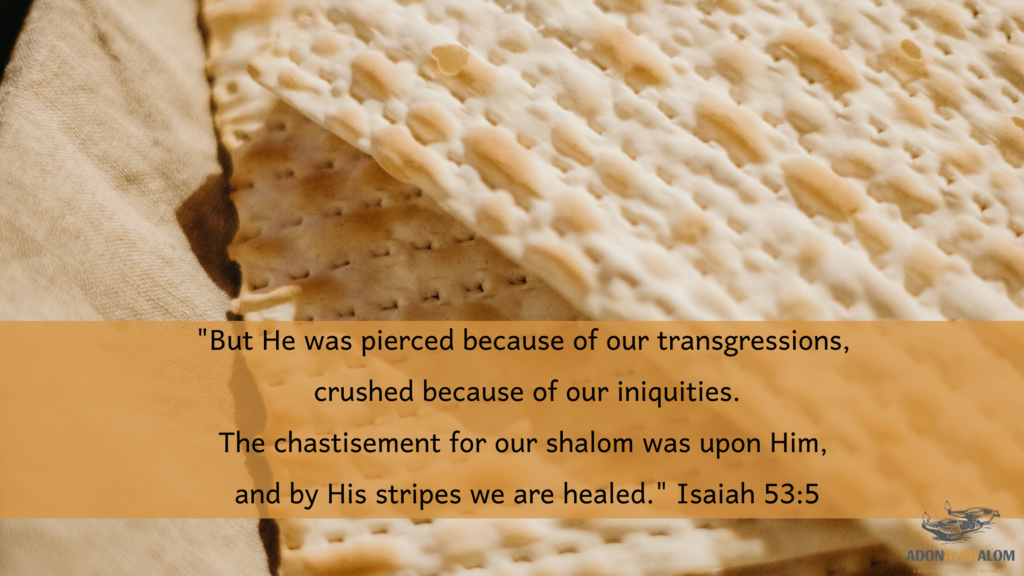
Yeshua (Jesus) became our meal offering. At his birth, He was given frankincense by the wise men (Matthew 2:11). Yeshua used matzah at the Passover meal.
“And while they were eating, He took matzah; and after He offered the bracha, He broke it and gave it to them and said, “Take; this is My body.” Mark 14:22
Our Savior’s body was broken for us, just like we break the matzah during the Passover meal.
Our Savior was offered up as a fragrant aroma, just as the meal offering was matzah and oil mixed with frankincense.
Matzah + oil?
The body of Messiah + the anointing, abiding, consoling Presence of the Holy Spirit (Ruach haKodesh).
The atonement was seasoned with salt.
Salt was not only a preservative, it was used to treat wounds.
He was wounded for our transgressions, but this holy sacrifice would bring healing to the nations and we would become the salt of the earth (Matthew 5:13).
He was raised up by the supernatural power of the Holy Spirit.
Do you see all of the connections here?
Do you see how intricately interwoven the Scriptures are, truly?
I bet you never thought of frankincense having anything to do with Passover!
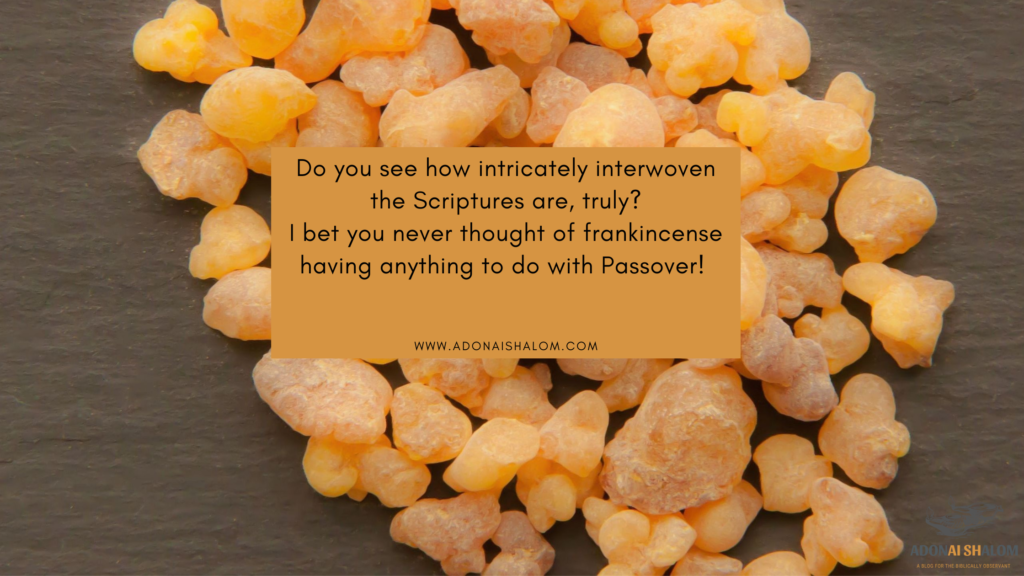
Messiah Yeshua (Jesus) also became our guilt offering
This is the offering that required restitution. We have willingly and disobediently gone against God’s Word. Our Redeemer chose to forgive us of our grievous offenses by making atonement for our sin.
Messiah Yeshua (Jesus) became our shalom offering
Remember that verse above, Isaiah 53:5? The chastisement for our shalom was upon Him.
The chastisement for our peace was upon Him.
We couldn’t have peace if it weren’t for His sacrifice.
The common peace offering in Leviticus was a lamb.
“…Behold, the Lamb of God who takes away the sin of the world!” John 1:29
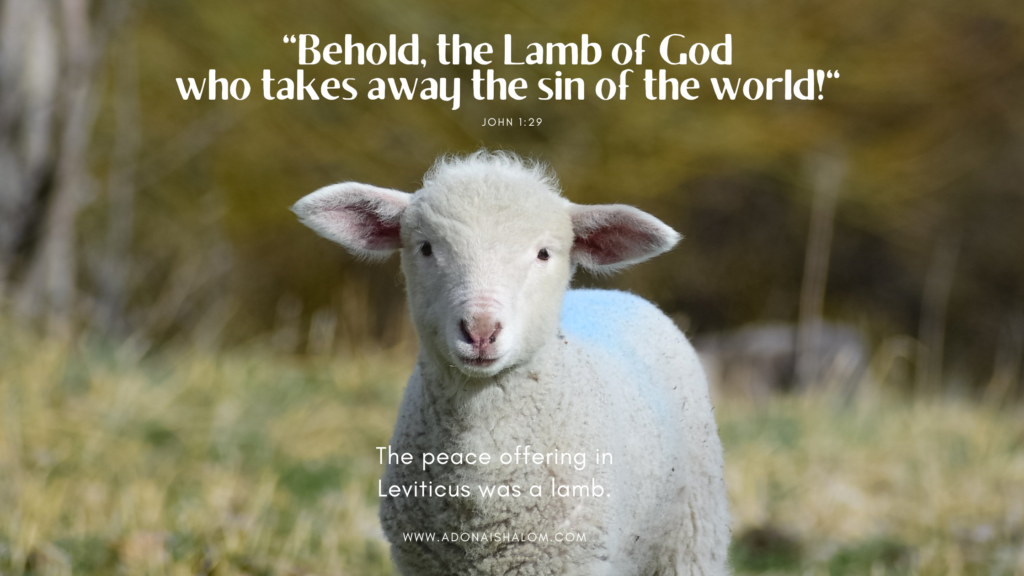
So to answer the question: Why did Messiah die at Passover rather than Yom Kippur?
The LORD has His reasons, but it seems to me that He chose Passover because He did more than what could’ve ever been done on Yom Kippur.
At Passover, Yeshua (Jesus) truly embodied every aspect of the meal. He symbolically shared His body and His blood with the disciples at the Passover seder meal and then went on to literally give up His body and blood for the sake of lost humanity as He was horrifically nailed to the cross as atonement.
He is our Passover Lamb and He died so we would be able to see how throughout history, He has masterfully planned every detail of our divine rescue.
He came to rescue us from sin and death, and He did it in the most profound way.
Be encouraged today, that our LORD made a way where there seemed to be no way and bridged the chasm so we could be forgiven. He has atoned for our sin!
The atonement that Messiah Yeshua (Jesus Christ) made for us is a permanent atonement. Not once a year, not once in a lifetime, it is a permanent, ongoing atonement that ensures we are covered by His blood and presented as cleansed and holy before our Perfect and Holy God.
Those of us who have a relationship with our Savior Yeshua ha Mashiach (Jesus Christ) know that He made atonement for our sins. If you do not know this important Truth and do not yet have a relationship with your Creator, please know this: God sent His Son to die in your place, as atonement for you, so that you could be reconciled to God. If you will trust Him today with your eternal future, you can have the confidence and peace of knowing you will live eternally with Him. Subscribe to our monthly newsletter to find out more about our LORD and His ways!
